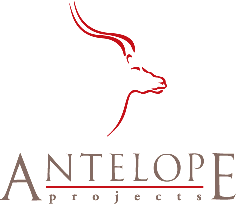Case
|
Leisure Centre |
Organizational Behaviour |
The pattern used to view this case is based on Barry Oshry’s Dance of the Blind Reflex. Oshry claims that this pattern is one we all fall into without even seeing it. Oshry presents this pattern in an abstracted way, distanced from all details such as job titles and descriptions of context, because he wants to persuade us how universal the pattern is.
Oshry conducts workshops with people from many different situations and backgrounds. While all the people he works with see their situation as unique and particular, Oshry tries to demonstrate to them that many of the dynamics they deal with are absolutely predictable at a general level, without taking account of any specific details. The usefulness of this insight is that it enables the dynamics to be dealt with without them being used to imply moral failings, unworkable plans, poor business ideas or other negative judgments.
The centre is owned by the District Council and operated by a management company to council guidelines. There are strict rules about having certain numbers of qualified staff on duty to ensure public safety, but it is always an uphill struggle to meet these rules. There is a high turnover of staff as work is seen as menial and unrewarding except as a holiday job for students. The area the centre is in is a bit rough and staff have to deal with unruly teenagers, vandalism, and sometimes more serious problems.
In addition to the pool there is a gym and a café. The other facilities do not concern us in this case study.
The cost of water time is also quite high and the swimming club was paying over £20K annually to the pool – their biggest single customer. In the club’s eyes this entitled them to some consideration but it remains difficult even to get a meeting with pool management.
One of the bones of contention was and is opening the doors on weekend mornings. The management position was that the centre opened at 8. The club position was that they hired the pool from 8 and if the swimmers could not be in the water by 8 they should not be paying for the pool time. In practice there is a regular standoff with swimmers standing outside in whatever weather waiting for the doors to be opened to allow them to rush to the changing rooms. The staff are visible inside the glass doors chatting and making cups of tea. Formal and multiple meetings with pool management (middles) and the Council (tops) have failed to shift this pattern.
The swimming session means that a good number of parents (perhaps 40) must wait for an hour in the centre while their kids swim. I use the gym during this time and other parents go to the café. The café does not open until 8.30, thus missing the bulk of the business that is available and by 9.00 there are no customers at all. Fitting in an hour’s session in the gym is also awkward as instructors arrive late and have to open up the gym and switch on all the machines.
The staff are paid from 8 a.m. at weekends, the nominal opening time of the centre. The shift is understandably unpopular and if people arrive late the centre may be understaffed and in danger of being prosecuted under the rules for safety. They hate being put under pressure by the swimming club as they feel the issue should be resolved by management.
For a while I took to leading the swimmers into the centre by the staff entrance in order to put pressure on management to resolve the issue, but management simply reflected the pressure onto the staff. The easiest thing for the staff to do was to find a job at another leisure centre.
The council saw themselves as making major investment decisions in refurbishment and new facilities and would only consult about future plans not about current performance. Informally they saw the centre management as being there to take the "flak" from customers – this is what they were being paid for. They never connected the financial performance of the centre with the management culture that this implied.
They hated being unable to produce a reasonable response to swimming club demands and the distrusted the club not to find a way of pulling strings at the council and putting them in the wrong. They knew they were expected to take the flak and just put up with it.
Their response was to make themselves unavailable and to hide behind formal schemes such as a suggestion box and quality feedback forms. Wherever possible they got their staff, even the cleaners, to intervene with customers rather than do so themselves.
Case description by Aidan Ward, October 2002.
 |
 |
| [top] |
Copyright © 2002 Veryard Projects Ltd & Antelope Projects Ltd http://www.veryard.com/orgmgt/caseswimming.htm |